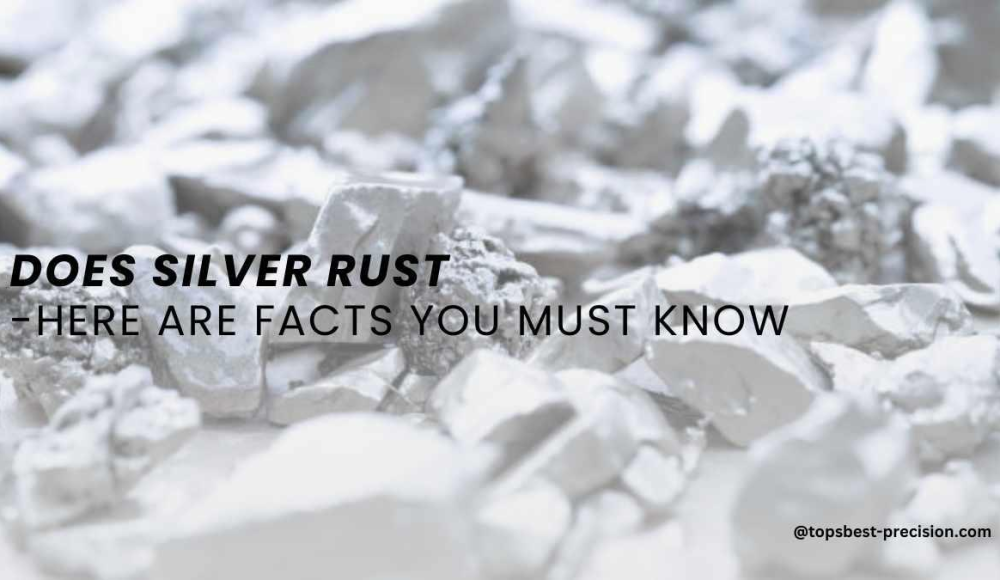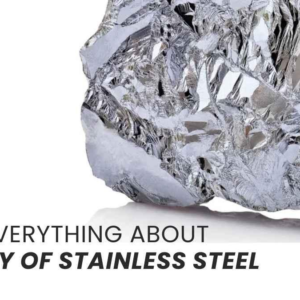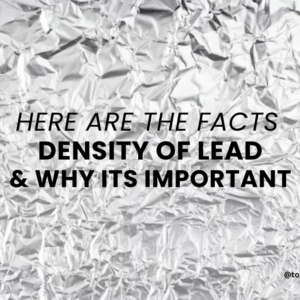Silver is regarded as a precious metal for manufacturing aesthetic products. Its appearance is shiny and does not corrode easily. However, many people ask whether silver rusts or not Contrary to iron or steel; Silver does not tarnish like iron, which rusts when exposed to moisture and oxygen, forming iron oxide. Nevertheless, it still reacts to tarnish, which makes the shiny outer layer of silver turn gray. Tarnishing usually takes place when silver comes into contact with the sulfur compounds to form a black-colored compound called silver sulfide. The color change can be cleaned off the surface but doesn’t have the destructive effects of rust.
What is Silver?
Silver has a shiny surface, a ductile, and carries both heat and electricity well. It’s a chemical element that has the symbol Ag and an atomic number of 47. Silver has historically been used for making jewelry, coins, electronics, and a host of other applications. Silver can be an easy-to-work metal. It can easily be molded and manipulated to take almost any form. Furthermore, It is non-hygroscopic, non-oxidizing, and non-corrosive. The element is applied in fancy ornaments, cutlery, batteries, solar cells, and other electronic gadgets and medical equipment because of its compatibility with biological systems, and conductivity.
Does Silver Rust?
Silver, in its particular way, does not corrode in the way you would expect rust to do. Rust/corrosion takes place between iron and steel. It’s a state where a combination of water and oxygen produces iron oxide. Silver is not composed of iron. Therefore, it can not be said, that it does erode.
However, silver can turn black or dull on time. It promotes tarnishing when it gets exposed to sulfur or substances containing it from the surrounding atmosphere and forms a layer of black silver sulfide on its surface. This tarnish makes the silver look less attractive and blackish. Thus, it does not weaken it like rust weakens iron.
Comparing Silver Tarnish and Rusting
While both tarnish and rust refer to forms of corrosion that affect metals, they are distinct processes with key differences:
Tarnish (Silver)
- Cause: Stain is formed when silver is exposed to sulfur-containing compounds in the atmosphere to form black silver sulfide on its surface.
- Appearance: Tarnish generally forms as a dark/dull colored film on the surface, usually gray to black in shade.
- Effect on Metal: Tarnishing only creates a layer on top of the silver without compromising the material internal system. It can be easily washed with detergent, which will make it to be disposed of.
- Remedies: Tarnish may be prevented by storing silver in sealed containers using anti-tarnish cloths. Moreover, you can polish the silver metal most often.
Rusting (Iron/Steel)
- Cause: Normally happens when iron/steel comes into contact with moisture.
- Appearance: Rust comes out as a red-brown or orange flaky formation that develops on the surface.
- Effect on Metal: Rust can degrade the metal and ultimately, compromise integrity within and on the structure. In due course, rust can cause fractures in the material so, it’s a big challenge for the material.
- Prevention: The rust formation can be stopped by either using paint or a galvanization process. You can also put the metal at low humidity.
Key Differences
- Materials Affected: Tarnishing takes place on silver. While rusting happens on copper, iron, and steel.
- Impact on Metal: Tarnish only affects the surface of the metallic item while rust can go deeper and cause damage to the metallic article.
- Cleaning: Metal tarnish can be removed easily through a washing process, and wiping while rusting may need scraping or chemical solutions.
Factors Influencing Tarnishing (Non-Rusting) of Silver
Several factors influence how quickly and to what extent silver tarnishes:
1. Exposure to Sulfur Compounds
Silver does not tarnish like iron, which rusts when exposed to moisture and oxygen, forming iron oxide. These compounds are widely employed in products ranging from rubber to the air we breathe, and foods such as eggs can catalyze the tarnishing process. Sulfur reacts with silver, forming a black layer of silver sulfide on the metal’s surface.
2. Humidity and Moisture
The moisture-rich air will cause tarnishing to occur at a faster rate, especially when exposed to damp air, water, and moisture.
3. Contact with Chemicals and Pollutants
Chemical exposure is considered the main cause of the tarnishing of silver. The dissolve ability of a metal increases when exposed to household cleaning agents, and perfumes. Besides, other gases such as sulfur dioxide found in industrial areas are also known to cause tarnishing of the surface.
4. Handling of Articles with Skin Oils and Cosmetics
When you wear silver jewelry, it gets tarnished by skin oil, cosmetics, lotion, and even your perfume. They may deposit a rather thin surface layer which can capture pollutants and moisture to promote tarnishing. It’s possible to lessen this effect through frequent cleaning and maintenance.
5. Alloy Composition
The tarnishing of silver also depends on the particular composition of the alloy. For instance, sterling silver t is made of 95% of silver and 10% of copper. Copper is more reactive than silver and when it gets oxidized it tarnishes. Fine silver consists of 1000 parts silver to 1 part copper or 99.9% silver. It is less susceptible to tarnish. However, fine silver can still tarnish over time.
How to Keep Silver from Becoming Tarnish?
However, silver looks aesthetic but it can turn black and lose its sheen. Nonetheless, it can be preserved to retain its silver hue. Here are several effective ways to protect silver from tarnishing:
1. Store Silver Properly
Cleaning is foremost to preserve silver from tarnishing. High humidity speeds up the tarnishing process, to slow it down, store silver in an airtight container or you can use a tarnish bag. One can use anti-tarnish cloths that are usually infused with chemicals that help to remove sulfur from the surface and, thereby, reduce tarnishing.
2. Use Anti-Tarnish Strips
Anti-tarnish strips work to remove sulfur-bearing gases in the air. So, it prevents the tarnishing of silver. These strips can be put inside storage boxes, drawers, or display cases. The strips should be replaced often which gives continuous protection.
3. Clean Silver Regularly
If tarnish is allowed to build up on the surface, you will need significant cleaning to remove it, but if it is cleaned regularly, then slight tarnish will not be a problem. For this, dampen a piece of soft cloth and polish the silver items. For deep tarnish use tarnishing removers meant for silver. Don’t use strong mechanical action when washing silver. This may bring scratches and other damage to the silver surface.
4. Use Silver Polishing Clothes
Silver polishing cloths, cleaners, and their polishing agents must be especially effective. They need to remove tarnish and form a protective layer on the silver’s surface. These clothes ought to be used often to maintain the best appearance of your silver pieces.
Frequently Asked Questions about Silver Corrosion
Q1. Does silver rust?
It is wrong to say that silver rusts like iron or steel. Rust is a type of decay that occurs in iron. Silver does tarnish but tarnishing is not the same as rusting. It is the reaction between silver and sulfur in the air.
Q2. What makes silver tarnish?
Silver tarnishes when it reacts with sulfur in the atmosphere. These compounds can be in products such as rubber, specific foods, and pollutants. Tarnish occurs in the form of silver sulfide which gives the silver an appearance of being dark or dull.
Q3. How to avoid the tarnishing of silver?
The best way to avoid tarnishing is to keep the silver in a cool and dry area and sealed containers or tarnish-resistant pouches. Do not expose it to chemicals, humidity, or polluted air, and wipe it with a soft cloth or silver polish.
Q4. Is tarnish harmful to silver?
Tarnish didn’t affect the structure of silver as a material. It is not a deep color which means you can easily be wiped off or polish off the surface. However, if not removed over time, tarnish will reduce the brightness of the silver.
Q5. What is the optimal way to clean silver that has become tarnished?
Minor rusting should be easily removed by wiping with a soft cloth. If the tarnish is darker use a silver cleaner that addresses this specific issue or consult a professional service.
Q6. Can metal tarnish even when not in use?
Yes, silver can tarnish even if you do not wear them. Tarnishing happens due to exposure to air and sulfur compounds, although in storage, tarnishing can take place because it was exposed to air within the closed storage area.
Q7. Does tarnish reduce the value of silver?
Tarnish doesn’t affect the value of silver, but it alters its appearance. If one intends to sell it in the future, then yes, tarnish is an eyesore but it does not in any way take away from the silver’s purity or weight.
Q8. Is it safe to use normal cleaning products for washing silver?
Daily cleaning products should not be used because they may contain chemicals that can affect silver. For this, you should always clean the silver with cleaning products designed for silver or a special gentle polishing cloth that does not scratch its surface.
Q9. How should silver be stored to avoid the formation of tarnish?
To avoid tarnish, store the silver in an airtight container or anti-tarnish pouch. You can also put anti-tarnish strips on the interior of the storage box to reduce sulfur that causes tarnishing.



